Resources
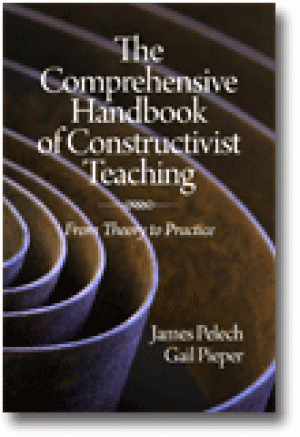
While many people talk about the Constructivist philosophy, there has not been a publication that provides a detailed description of what a Constructivist classroom sounds like and looks like. This book fills that void by examining the philosophy, translating it into teaching strategies, and providing over forty examples. These examples come from the elementary level up to and including the collegiate level, and include all content areas. These examples show how the Constructivist educator uses the linguistic mode, the visual mode, and the kinesthetic mode to create a class environment in which the Constructivist philosophy flourishes. Examples of student work are provided; the book also includes chapters on note-taking, Problem-Based Learning (PBL), action research, and other Constructivist resources. Written in user-friendly form, this book presents a concrete and step by step approach for translating the Constructivist philosophy into classroom practice. This book is intended for every Constructivist researcher, practitioner, and teacher-educator. The researcher and teacher-educator will benefit from topics such as the history of Constructivist thought, the principles of Constructivism and action research. This book is more than a list of recipes, and this will be beneficial to the practitioner. Starting with the principles of Constructivism, and bridging to four basic teaching strategies, the practitioner is guided on how to use different learning modes and meta-strategies to create a true Constructivist practice. An educator's life is made up of one's philosophy, teaching principles, daily strategies,resources, and research tools. This book provides an in-depth look, from the Constructivist perspective, at each one of these components. In every sense of the word, this book is truly comprehensive. (From the Publisher)
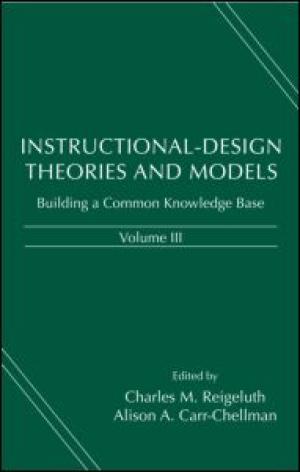
Instructional-Design Theories and Models, Volume III: Building a Common Knowledge Base is perhaps best described by its new subtitle. Whereas Volume II sought to comprehensively review the proliferating theories and models of instruction of the 1980’s and 1990’s, Volume III takes on an even more daunting task: starting to build a common knowledge base that underlies and supports the vast array of instructional theories, models and strategies that constitute the field of Instructional Design. Unit I describes the need for a common knowledge base, offers some universal principles of instruction, and addresses the need for variation and detailed guidance when implementing the universal principles. Unit II describes how the universal principles apply to some major approaches to instruction such as direct instruction or problem-based instruction. Unit III describes how to apply the universal principles to some major types of learning such as understandings and skills. Unit IV provides a deeper understanding of instructional theory using the structural layers of a house as its metaphor and discusses instructional theory in the broader context of paradigm change in education. (From the Publisher)
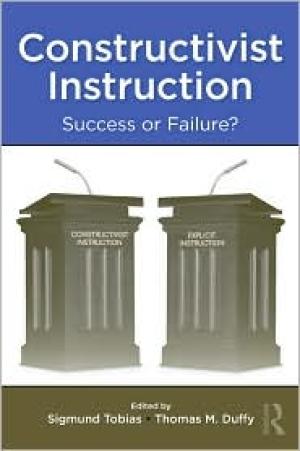
Constructivist Instruction: Success or Failure? brings together leading thinkers from both sides of the hotly debated controversy about constructivist approaches to instruction. Although constructivist theories and practice now dominate the fields of the learning sciences, instructional technology, curriculum and teaching, and educational psychology, they have also been the subject of sharp criticism regarding sparse research support and adverse research findings. This volume presents: the evidence for and against constructivism; the challenges from information-processing theorists; and commentaries from leading researchers in areas such as text comprehension, technology, as well as math and science education, who discuss the constructivist framework from their perspectives. Chapters present detailed views from both sides of the controversy. A distinctive feature of the book is the dialogue built into it between the different positions. Each chapter concludes with discussions in which two authors with opposing views raise questions about the chapter, followed by the author(s)’ responses to those questions; for some chapters there are several cycles of questions and answers. These discussions, and concluding chapters by the editors, clarify, and occasionally narrow the differences between positions and identify needed research. (From the Publisher)
Teaching Tactic: allowing students to establish parts of the curriculum of a course.
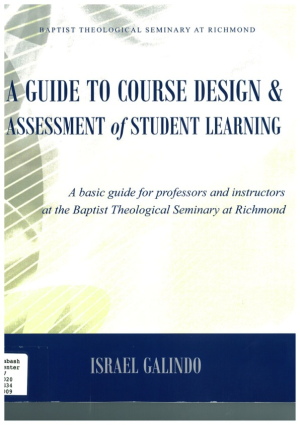
"This guide is primarily for the Master of Divinity degree program ... and the M.Div. concentrations"--P. 1.
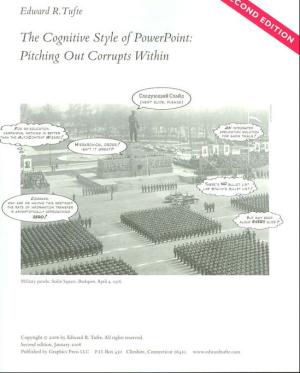
In corporate and government bureaucracies, the standard method for making a presentation is to talk about a list of points organized onto slides projected up on the wall. For many years, overhead projectors lit up transparencies, and slide projectors showed high-resolution 35mm slides. Now "slideware" computer programs for presentations are nearly everywhere. Early in the 21st century, several hundred million copies of Microsoft PowerPoint were turning out trillions of slides each year. Alas, slideware often reduces the analytical quality of presentations. In particular, the popular PowerPoint templates (ready-made designs) usually weaken verbal and spatial reasoning, and almost always corrupt statistical analysis. What is the problem with PowerPoint? And how can we improve our presentations? This slim volume from legendary "information design" guru Edward Tufte answers these questions with Tufte's usual wit, concision, and style. (From the Publisher)
In an attempt to engage students' higher-order thinking skills, we developed a documentary filmmaking project for our introduction to theology course. By documenting certain aspects of the theology of John Wesley and John Henry Newman (God, creation, revelation, Jesus, the church), students were able to delve deeply into these themes, better understanding them and their interrelationships. The project helped the students to actively practice historical theology, rather than passively learn about it through lectures. In addition, the project emphasized research skills, quality of writing and creative production, and a professional presentation at a screening.
This article outlines a template for sustained experiential learning designed to provide a context for learning the affective and performative as well as intellectual power of religion. This approach was developed for a traditional academic framework, adapting pedagogies developed for experiential learning, aesthetic training, and study abroad, and draws on personal experiences of teaching East Asian religions. The approach integrates intellectual learning with out of class experience to stimulate and enrich the highly personal and often significant questions that may arise upon studying religion and encountering religious practices both in and out of the classroom.
This article reflects on an effort to incorporate constructivist pedagogies (learner-centered, inquiry-guided, problem-based models of teaching) into an introductory class on Christian Ethics in an M.Div. curriculum. Although some students preferred more traditional pedagogies, the majority found that constructivist pedagogies better accommodated different life experiences, diverse learning styles, and other features of the M.Div. curriculum. Further, a qualitative assessment of one student exercise indicates that constructivist pedagogies have benefits over traditional pedagogies. Specifically, students' work on a learning-group research project displayed creativity, depth, and breadth not found in individual research papers. Nonetheless, lukewarm student feedback also demonstrated the need to consider wider factors when attempting such innovations.
This essay discusses an approach to teaching religious studies in a general education or core curriculum that I have experimented with for the last decade, which I call the "Learning Covenant." The Learning Covenant brings together various pedagogical theories, including transformational, experiential, contract, and cooperative learning, in an attempt to address diverse learning styles, multiple intelligences, and student learning assessment. It has advantages over more traditional teacher-directed approaches to teaching, including meeting student resistance to "required" courses head-on by inviting them to identify learning needs regardless of chosen vocation and meeting them in the context of a religious studies course, recognizing the multiple ways in which students learn and providing a variety of opportunities for students to express their learning, and allowing students opportunity to take increased responsibility for their own learning. The essay will focus on the Learning Covenant's development, components, strengths, and drawbacks.